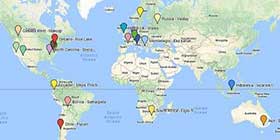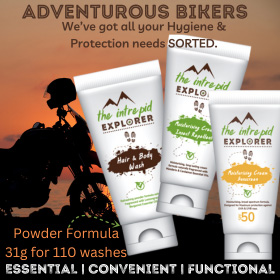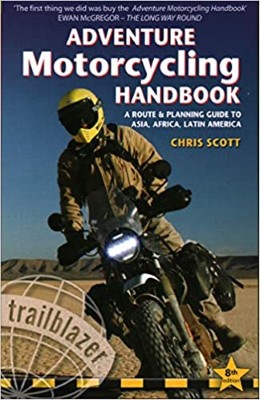|
30 Sept 2023. The rebuild is pretty much done. The bike is back together and running perfectly. So much better now that the forks have been rebuilt. A pleasure to ride.
The rebuild has answered a question I pondered before the trip. Which wheels are best for an adventure bike? Cast alloy or with spokes, tube or tubeless.
I think it's fair to say most big adventure bikes never really see any adventure, instead spending their lives touring on paved, first world roads with maybe a bit of prepared dirt, or even just weekend riding and commuting. For those bikes, cast alloy wheels with tubeless tyres are fine. Small punctures can be plugged quickly and easily without removing the wheel. I don't think tubeless alloys are much use for proper adventure riding though.
There are a couple of reasons, if you do need to change a tyre, as we did, you may run into a problem. Changing the tubeless front tyre on Richard's bike (CRF1100) was easy enough but inflating it afterwards proved impossible without a high volume of air. This may have been partly due to it being a second hand tyre that had probably been stored horizontally, compressing the beads together. It was the only tyre we could find in Douala though.
Being tubeless, you need the bead to seat on the rim in order to inflate it but without a high volume of air that may not be possible. The small compressor we had wasn't enough, neither is foot or hand pump pressure. Yes, I know about wrapping straps around the tyre circumference and compressing the tyre but we couldn't get the bead to seat. Fortunately, a helpful fellow with a car took the wheel to a garage in town and used their high pressure air to seat the bead for us. But what do you do if this happens in a remote area and you're on your own?
Then the next issue. The wheels can take a real battering on bad surfaces. I knew my rear wheel had a dent in it, I think that happened in Angola but I only noticed it in Namibia. What I didn't know until I took the tyre off last week was that the rim was cracked. Not sure when the crack started but if that was a tubeless tyre it would have gone flat with no chance of re-inflation. Also if that was a cast alloy wheel it quite possibly could have broken up.
It has answered the question for me and no need for further pondering. If you're going to remote areas, riding on poor surfaces with no backup or support and have to be self sufficient, then I think it's best to have spoked wheels with tubed tyres.
I'll attach photo's of the damaged wheel.
The coolant leak in Angola/ Namibia is an odd one. It definitely leaked from the weep hole, covering the engine and my boot, so evidently there was a problem. Having topped up the reservoir in Windhoek, it didn't use any coolant for the rest of the trip. The original coolant was orange and the top up coolant was blue. On stripping it down, the reservoir still had blue coolant and the radiators etc. still had orange, they hadn't mixed. I haven't changed the coolant pump yet. I've done a few hundred miles on it since rebuild and it's still not leaking. How can it fix its own leak? I'm baffled by it.
The bike had a pretty good strip down. All parts cleaned, lubed and greased as required then reassembled with anti-seize compound. Its got a few more scratches on it than it had before the trip but all in all it scrubbed up well.
|

















 87Likes
87Likes











 Threaded Mode
Threaded Mode








